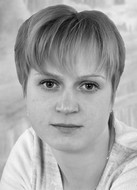Central venous pressure as biomarker of racing skiers’ adaptation
Фотографии:
ˑ:
PhD, Associate Professor A.S. Bakhareva1
PhD, Associate Professor A.A. Pletnev1
PhD, Associate Professor E.Yu. Savinykh1
A.S. Aminova1
1South Ural State University (National Research University), Chelyabinsk
It is the individual aerobic energy generation ability that is a key for the working capacity in modern cross country skiing since the bodily energy costs including those covered by the anaerobic energy sources are eventually connected with the oxidizing phosphorylation. The study was designed to obtain and analyze the blood flow (haemodynamic) rates indicative of the racing skiers’ adaptation process efficiency under physical load. Subject to the study were 18-23 year old male racing skiers (n=17) grouped as follows: Group 1 was composed of the individuals with RUS points under 67.89 in the racing events; and Group two of the skiers having RUS points in excess of 73.22. For the purposes of the study, the sample was tested using a bio-impedance tetrapolar reopolygraph and a blood analyzer system. The negative chronotropic and positive inotropic effects in Group 2 was indicative of the dominant role of the stroke volume in the blood flow control and better heart adaptability to the physical loads. It was also found that the low resting central venous pressure rates varying at 63.86 mm Hg make enabled trained racing skiers to keep their performance under 67.89 RUS-points in the racing events as reported by the Russian Cross Country Skiing Federation rating database.
Keywords: central venous pressure, stroke volume, diastolic heart-filling wave, circulating blood deficit, intrathoracic pressure.
References
- Astakhov A.A., Bubnova I.D., Govorov B.M. Novye dannye o medlennykh volnakh kompleksa parametrov krovoobrascheniya zdorovykh [New data on slow waves of complex of circulatory parameters in healthy individuals]. II Vseros. simpozium 'Kolebatelnye protsessy gemodinamiki. Pulsatsiya i flyuktuatsiya serdechno-sosudistoy sistemy' [Proc. II Nat. Symposium 'Oscillatory processes of hemodynamics. Pulsation and fluctuation of cardiovascular system']. Chelyabinsk: [s.n.]; 2002, pp. 227-237.
- Belichenko V.M., Baranov V.I., Novoseltsev S.V. et al. Koeffitsient diffuzii kisloroda v voloknah skeletnykh myshts [Oxygen diffusion coefficient in skeletal muscle fibers]. Aviakosmicheskaya i ekologicheskaya meditsina, 2002, vol. 36, no. 3, pp. 31-38.
- Donina Zh.A., Baranov V.M., Aleksandrova N.P. Dykhanie i gemodinamika pri modelirovanii fiziologicheskikh effektov nevesomosti [Respiration and hemodynamics at simulation of microgravity physiologic effects]. St. Petersburg: Nauka, 2013, P. 182.
- Zakharov G.A., Volkovich O.V. Vnutribryushnaya gipertenziya i funktsionalnoe sostoyanie organizma [Intraperitoneal hypertension and functional state of the body]. B. Eltsyn KRSU publ., 2008, 156 p.
- Ivanov K.P. Funktsiya alveol kak rezultat evolyutsionnogo razvitiya dykhatelnoy sistemy u mlekopitayuschikh [Alveolar function as a result of evolutionary development of respiratory system in mammals]. Zhurnal evolyutsionnoy biokhimii i fiziologii, 2013, no. 1, vol. 49, pp. 55-59.
- Marchenko S.P., Khubulava G.G., Naumov A.B. et al. Patofiziologicheskie printsipy i podkhody k otsenke gemodinamiki [Pathophysiological principles and approaches for evaluating hemodynamics]. Pediatr, 2014,vol. 5, no. 4, pp. 110-17.
- Melnikov A.A. Sostoyanie regionalnogo krovoobrascheniya u sportsmenov vysokoy kvalifikatsii [State of regional circulation in highly skilled athletes]. Vestnik sportivnoy nauki, 2008, no. 3, pp. 32-35.
- Teplov A.Yu., Butinova N.V. Vliyanie ATF na sokratitelnye svoystva izolirovannoy m.SOLEUS myshi [Effect of ATP on contractile properties of isolated m.SOLEUS in mice]. Morfologiya, 2006, vol. 129, no. 2, pp. 94-95.
- Tkachenko B.I., Evlakhov V.I., Poyasov I.Z. Gemodinamicheskie mekhanizmy snizheniya venoznogo vozvrata i parametrov legochnogo krovoobrascheniya pri eksperimentalnoy ishemii miokarda [Hemodynamic mechanisms for reducing venous return and pulmonary circulation parameters in experimental myocardial ischemia]. Byulleten eksperimentalnoy biologii i meditsiny, 2009, vol. 147, no.1, pp. 32-36.
- Gelman S. Venous Function and Central Venous Pressure. Anesthesiology, 2008, vol. 108,no. 7, pp. 35–48.
- Kasper Gejl, Lars G Hvid, Sarah Jean Willis, Niels Ortenblad. Repeated high-intensity exercise modulates Ca2+ sensitivity of human skeletal muscle fibers. Scandinavian Journal of Medicine and Science in Sports, 2015, 26(5). DOI 10.1111/sms.12483.
- Richter T., Bergmann R., Pietzsch J., Kozle I., Hofheinz F., Schiller E., Ragaller M., van den Hoff J. Effects of posture on regional pulmonary blood flow in rats as measured by PET. J. Appl. Physiol.,2010, no. 108 (2), 422–429.
- Saltin B. Success in cc skiing: no longer just a question of a high aerobic capacity. 6 International Congress on Science and Skiing 2013, St. Christoph a. Arlberg, Austria. St. Christoph a. Arlberg, 2013, 2013,P. 14.



 Журнал "THEORY AND PRACTICE
Журнал "THEORY AND PRACTICE